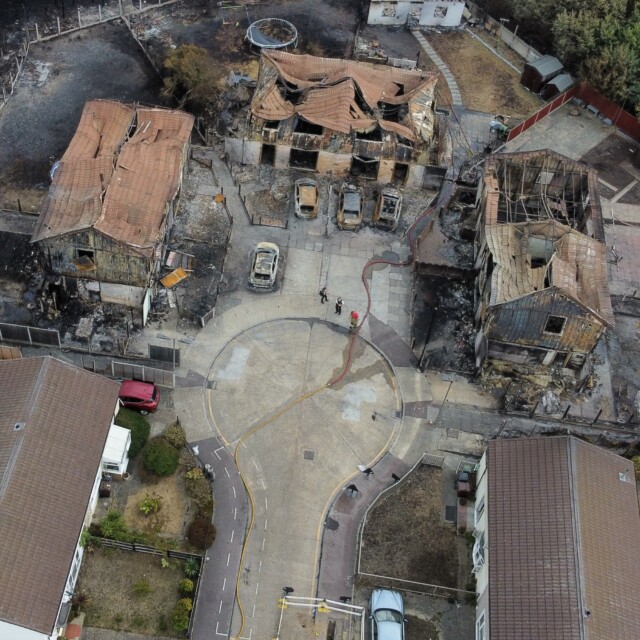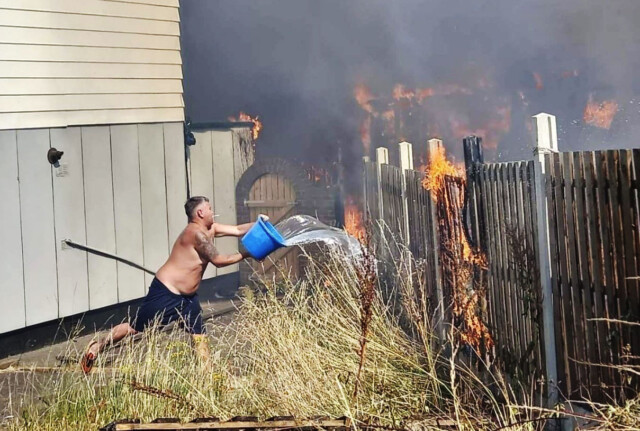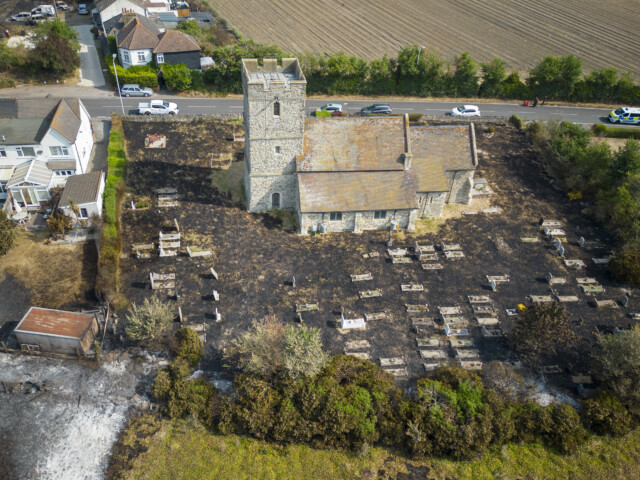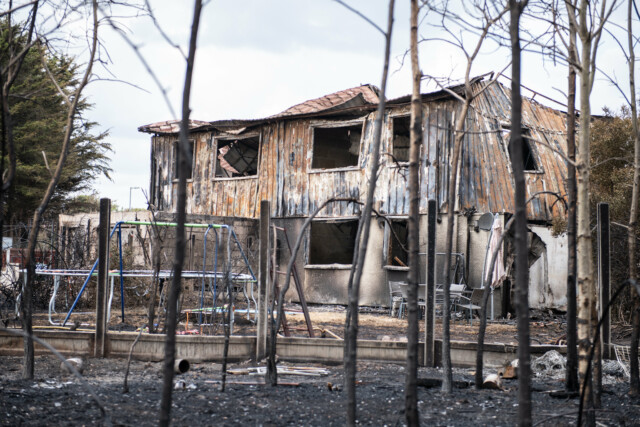
THE record heatwave sparked the worst day of fires since the Blitz, it emerged yesterday.
As wildfires swept across Britain, London Fire Brigade alone received more than 2,600 calls — over eight times higher than usual.
Terraced houses were gutted as wildfires swept through Wennington
Firefighters were hurt tackling flames which had engulfed homes in South Yorkshire

Grassland blaze in Dagenham left 14 homes destroyed along with 25 vehicles
The capital saw 41 houses reduced to rubble.
London Mayor Sadiq Khan said: “It was the busiest day since the Second World War.
“They dealt with more than a dozen simultaneous fires requiring 30 engines, a couple requiring 15, and some requiring 12.”
Fifteen of the country’s 51 Fire and Rescue Services declared major incidents as temperatures hit a high of 40.3C (104F).
In South Yorkshire, two firefighters were hurt tackling flames which had engulfed homes in Barnsley, Kiveton Park and Maltby.
At least 14 homes were destroyed in Norfolk, five in Lincolnshire and “small numbers” elsewhere.
Cabinet minister Kit Malthouse hailed the “magnificent” heroism of firefighters in “debilitating” conditions.
Ambulance services were stretched to the limit too. In London handlers took 13,400 emergency calls on Monday and Tuesday — equivalent to one every 13 seconds.
But Mr Malthouse warned the country would have to “learn to live with these extreme events” in the years ahead as “the impacts of climate change are with us now”.
Images of Tuesday’s aftermath showed crumbling buildings and the wrecks of burnt-out cars.
Residents who fled or who were evacuated returned to find their homes reduced to piles of still- smouldering ash.
Wennington, on the edge of East London, was typical. Flames had first erupted from a compost bin before engulfing rows of terraced houses.
Tinder-dry grass quickly ignited before spreading uncontrollably towards housing estates, motorways and train tracks.
In nearby Dagenham, a grassland fire destroyed and damaged houses and vehicles.
There were similar scenes in Barnsley where residents frantically tried to douse a garden fire with buckets of water and a hosepipe.

A braze resident turns to douse flames in Barnsley

Aerial images show the scorched churchyard in Wennington
Yesterday’s top temperature was 29.6C (85F) at Tibenham airfield in Norfolk.
Thunderstorms brought some relief with two inches of rain falling on ground left parched by days of non-stop heat.
But forecasters said the weather would remain dry and warm well into next month.
There are growing fears it could mean drought conditions not seen since 1976 with water levels “exceptionally low” amid high demand.
TRAIN CHAOS
Further train chaos was caused by trackside blazes, including one which melted a level crossing in Sandy, Beds, and saw overhead wires go up in flames.
For the third day running, scores of trains were cancelled or delayed as engineers battled to repair damaged lines.
Among the worst-hit services was the East Coast Main Line out of King’s Cross.
Exhausted passengers were forced to kip on its concourse after LNER axed all trains heading North towards via Peterborough, Doncaster, York, Darlington, Durham and Newcastle.
The knock-on effects could last for days.
Network Rail spokesman James Dean apologised to passengers.
He added: “Specialist teams worked all night but have been unable to fix the cables in time for the start of service.”
Speed restrictions were imposed and passengers were urged not to travel on Monday and Tuesday as temperatures rose.
The previous 38.7C record set in Cambridge in July 2019 was broken at 34 weather stations stretching 215 miles from Wisley in Surrey to Bramham in West Yorks.
Dr Mark McCarthy, the head of the Met Office National Climate Information Centre, said: “This week has been a remarkable week. We have seen temperature records tumbling.”
Mr Malthouse said: “We have seen a collective national endeavour to prepare for and manage the effects of the heat from town hall to Whitehall.
“From water companies and rail engineers to public servants right across the land, everyone has pulled together.
“Our national resolve has been exemplified by our fire and rescue services, for many of whom Tuesday was the busiest day since World War Two.
“They were undoubtedly stretched but coped magnificently and the systems put in place to make sure the fire service can operate on a national basis as well as locally worked well.
“In tinderbox conditions they have dealt with dozens of wildfires around the country over the last 24 hours.

A grassland fire destroyed and damaged houses and vehicles in Dagenham
“Some pressure on these services will now ease as the fiercest heat has subsided.
“Many incidents are now being scaled back. As always, there is no room for complacency.”







